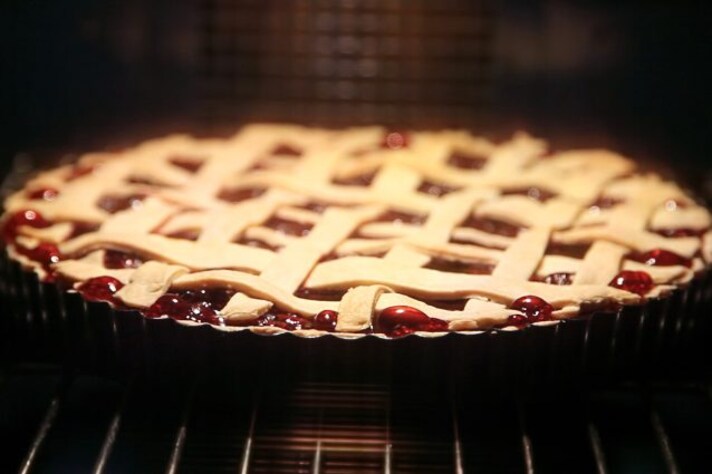
Pies are the timeless dessert that never go out of style. Whether it’s a bright lemon meringue in the spring, a cool berry pie in the summer, a hearty apple pie in the fall, or a rich pecan pie in the winter, there’s something magical about a slice of pie that fits perfectly into every season. But let’s be honest—there’s something truly special about pies in the fall. When the air turns crisp, and the scent of cinnamon-spiced apples or pumpkin wafts through the house, it’s a moment of pure comfort.
However, while pies might be a year-round delight, they aren’t entirely foolproof. Sure, you can mix up the filling, seal it under a perfect lattice crust, and feel like a baking champion. But before you toss that pie into the oven, there's one crucial thing to consider: never, ever bake your pie directly on the oven rack. Yes, you read that right! Here’s why that extra layer between your pie and the rack is more important than you might think.
Spills and Drips Galore
First things first, pies are notorious for being a bit messy, especially the fruit-filled variety. As your pie bakes, the filling heats up and, inevitably, some of that delicious goodness is going to bubble over. If your pie is sitting directly on the oven rack, those sugary juices will drip down, creating a sticky mess that’s not only a pain to clean but can also lead to smoke and unpleasant odors. You might even set off the smoke detector, turning your peaceful baking day into a mini-crisis. Save yourself the hassle and the elbow grease by placing your pie on a baking sheet or, at the very least, an oven-safe dish to catch those spills before they cause chaos.

The Structural Risk
Pies are delicate creatures, and they need all the support they can get. Baking directly on the oven rack leaves your pie vulnerable to becoming a wobbly mess. Pie crusts, especially the bottom layer, can become soft and bendy as they absorb moisture from the filling. Without a solid surface beneath it, your pie may start to sag between the grates of the oven rack, turning what should be a perfectly golden crust into a sad, misshapen disaster. It’s like trying to balance on a tightrope without a safety net—things could go south quickly.
Uneven Cooking Woes
Baking is a science, and pies are no exception. For a pie to turn out just right, it needs consistent, even heat. When you bake directly on the oven rack, the bottom of the pie can get too much direct heat while the middle and top might not cook as evenly. This can leave you with a bottom crust that’s overly browned (or even burnt) and a filling that’s not fully set. By placing your pie on a baking sheet, you help to distribute the heat more evenly, allowing the crust and filling to bake at the same rate. The result? A pie that’s perfectly cooked from bottom to top—no burnt bottoms or gooey centers.

The Flaky Crust Dilemma
Ah, the crust—the crown jewel of any pie. Whether it’s a buttery, flaky pastry or a tender, crumbly shortbread, the crust is what transforms a pie from good to great. But baking directly on the oven rack can lead to a soggy bottom crust, as the moisture from the filling can seep through without anything to absorb it. By using a baking sheet or stone, you provide a more consistent, dry surface for the crust to bake against, helping it stay crisp and golden. After all, no one wants to bite into what should be a flaky crust only to be met with a doughy disappointment.
Some Tips to Bake The Perfect Pie
So, how do you ensure your pie turns out perfectly every time? Start by placing your pie on a preheated baking sheet. This not only catches any overflow but also helps the bottom crust get that coveted golden color. If you’re worried about the filling bubbling over, consider lining the baking sheet with parchment paper or aluminum foil for an easy cleanup. And don’t forget to check your pie halfway through the baking time. If the edges are browning too quickly, cover them with foil to prevent burning while the rest of the pie finishes baking. With these tips, you’ll be slicing into a perfectly baked, golden pie that’s as beautiful as it is delicious.
;Resize,width=767;)
